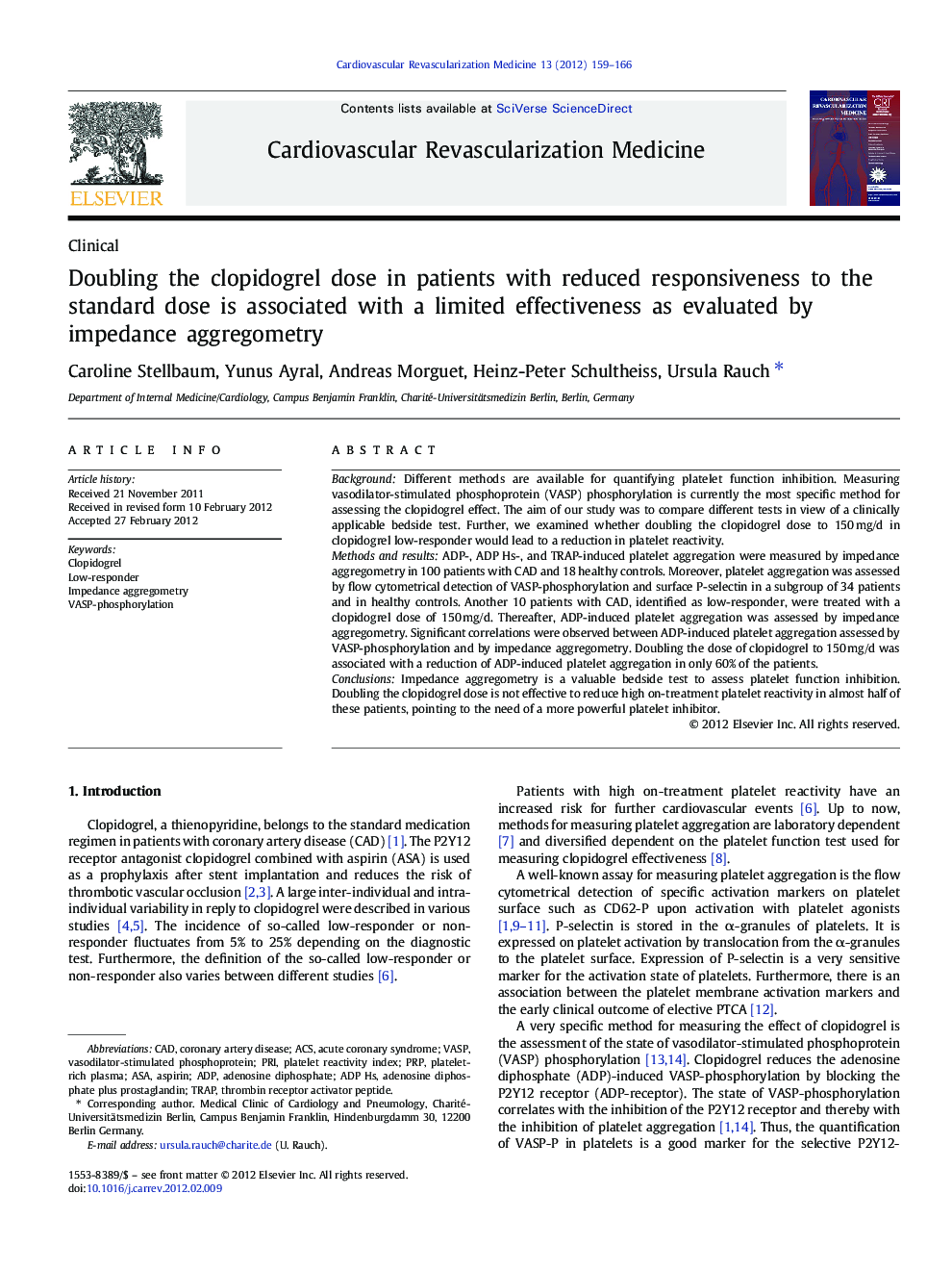| Article ID | Journal | Published Year | Pages | File Type |
|---|---|---|---|---|
| 2837008 | Cardiovascular Revascularization Medicine | 2012 | 8 Pages |
BackgroundDifferent methods are available for quantifying platelet function inhibition. Measuring vasodilator-stimulated phosphoprotein (VASP) phosphorylation is currently the most specific method for assessing the clopidogrel effect. The aim of our study was to compare different tests in view of a clinically applicable bedside test. Further, we examined whether doubling the clopidogrel dose to 150 mg/d in clopidogrel low-responder would lead to a reduction in platelet reactivity.Methods and resultsADP-, ADP Hs-, and TRAP-induced platelet aggregation were measured by impedance aggregometry in 100 patients with CAD and 18 healthy controls. Moreover, platelet aggregation was assessed by flow cytometrical detection of VASP-phosphorylation and surface P-selectin in a subgroup of 34 patients and in healthy controls. Another 10 patients with CAD, identified as low-responder, were treated with a clopidogrel dose of 150 mg/d. Thereafter, ADP-induced platelet aggregation was assessed by impedance aggregometry. Significant correlations were observed between ADP-induced platelet aggregation assessed by VASP-phosphorylation and by impedance aggregometry. Doubling the dose of clopidogrel to 150 mg/d was associated with a reduction of ADP-induced platelet aggregation in only 60% of the patients.ConclusionsImpedance aggregometry is a valuable bedside test to assess platelet function inhibition. Doubling the clopidogrel dose is not effective to reduce high on-treatment platelet reactivity in almost half of these patients, pointing to the need of a more powerful platelet inhibitor.
